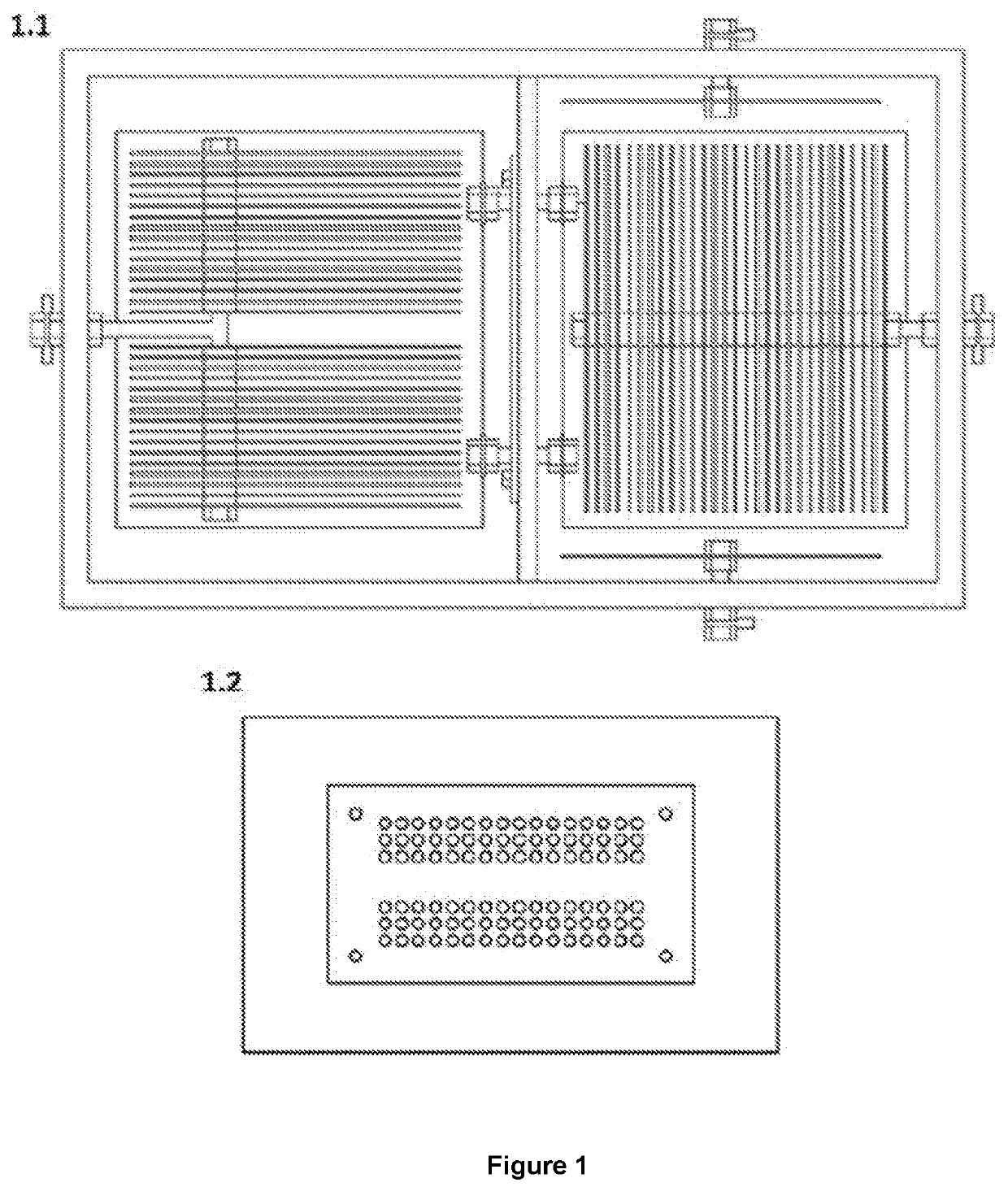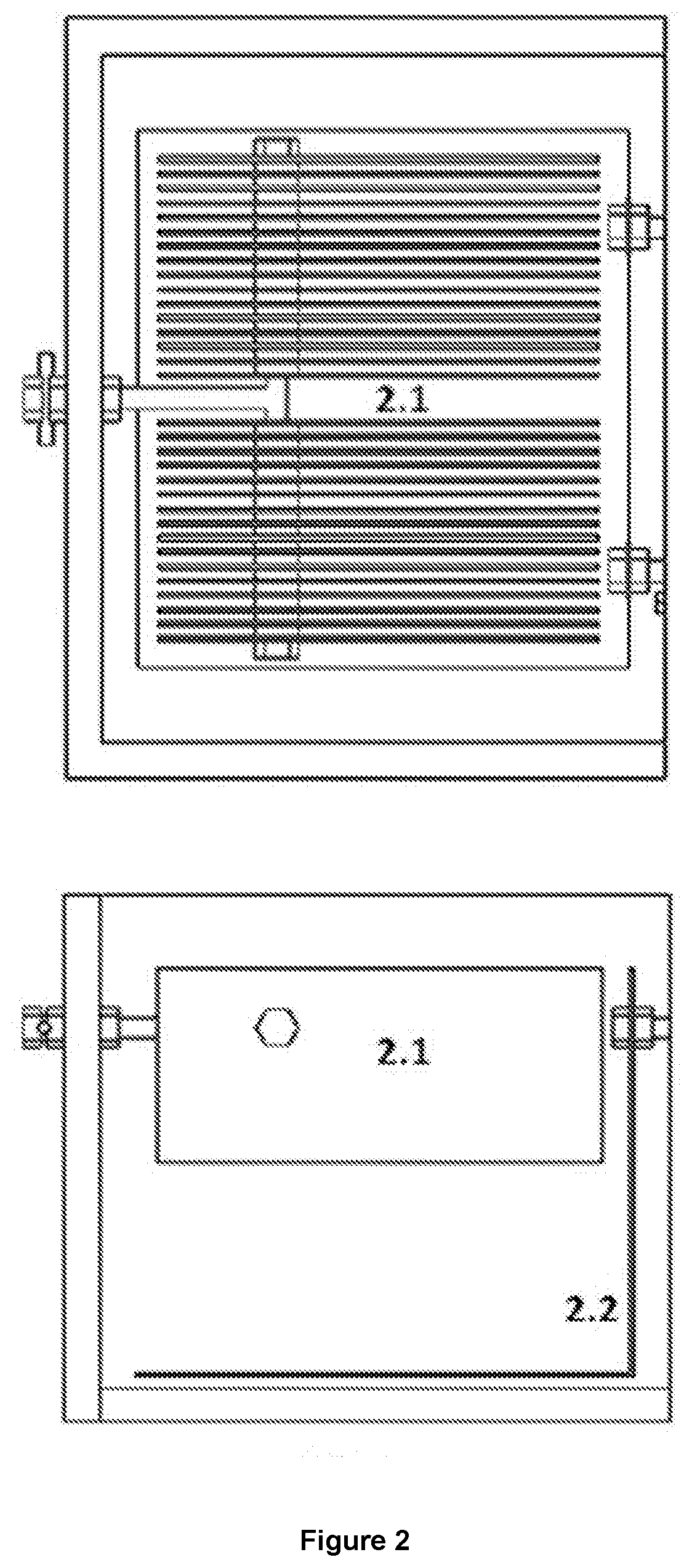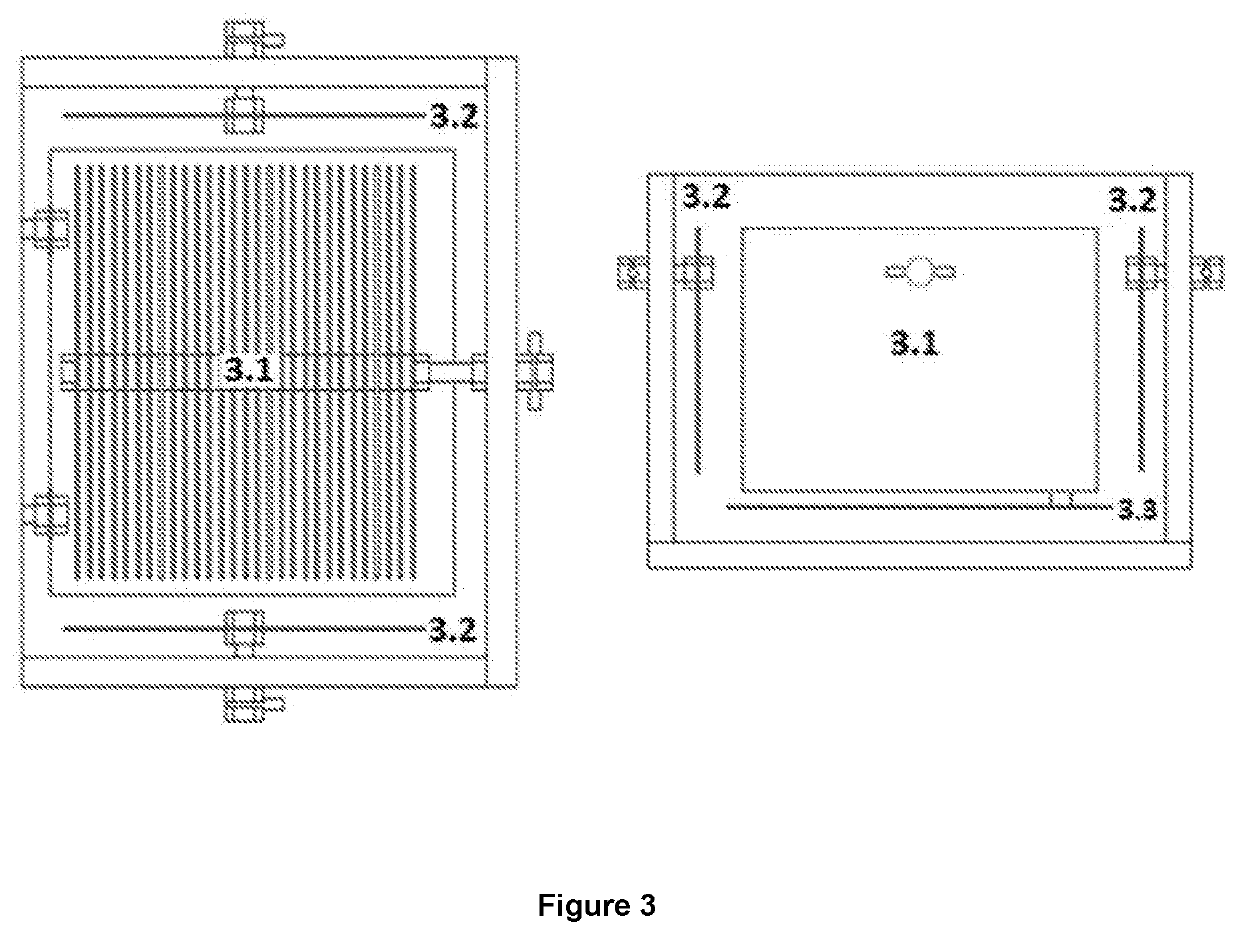Reactor that produces hydrogen by reduction of hydronium ions present in the chemical equilibrium in water and by oxidation of the organic molecules found in excrement
a technology of hydrogen ions and reactors, applied in the field of electrochemistry, can solve the problems of insufficient reserve of these types of fuels (coal, oil and gas), inability to continue, and inability to use hydrogen currently, and achieve the effect of high purity
- Summary
- Abstract
- Description
- Claims
- Application Information
AI Technical Summary
Benefits of technology
Problems solved by technology
Method used
Image
Examples
example
[0062
[0063]In order to show the operation and advantages of the reactor according to the present invention, a comparative example between a conventional cell and said novel reactor is presented below.
[0064]In this sense, while in conventional cells that use water the oxidation and reduction reactions are carried out in the same compartment (that's the reason why they normally generate a maximum of 66% H2 and 34% O2), when used the system disclosed in the present invention obtains percentages of hydrogen greater than 90%.
[0065]On the other hand, the energy consumption in the form of electric current is much higher when conventional systems are used because the potential that is required to electrolyze the water molecule is 3.32 times greater than to electrolyze an organic molecule such as urea. Now, although conventional cells can be used to electrolyte urine, the reactions are carried out in a single compartment presenting undesirable reactions such as foaming and nitrogen oxides fo...
PUM
 Login to View More
Login to View More Abstract
Description
Claims
Application Information
 Login to View More
Login to View More - R&D
- Intellectual Property
- Life Sciences
- Materials
- Tech Scout
- Unparalleled Data Quality
- Higher Quality Content
- 60% Fewer Hallucinations
Browse by: Latest US Patents, China's latest patents, Technical Efficacy Thesaurus, Application Domain, Technology Topic, Popular Technical Reports.
© 2025 PatSnap. All rights reserved.Legal|Privacy policy|Modern Slavery Act Transparency Statement|Sitemap|About US| Contact US: help@patsnap.com



